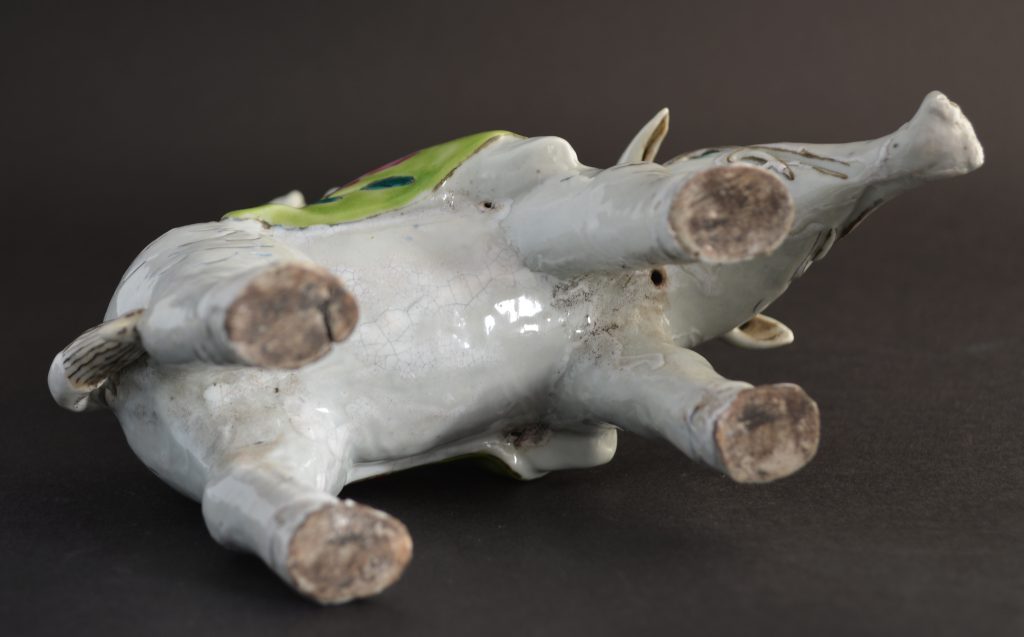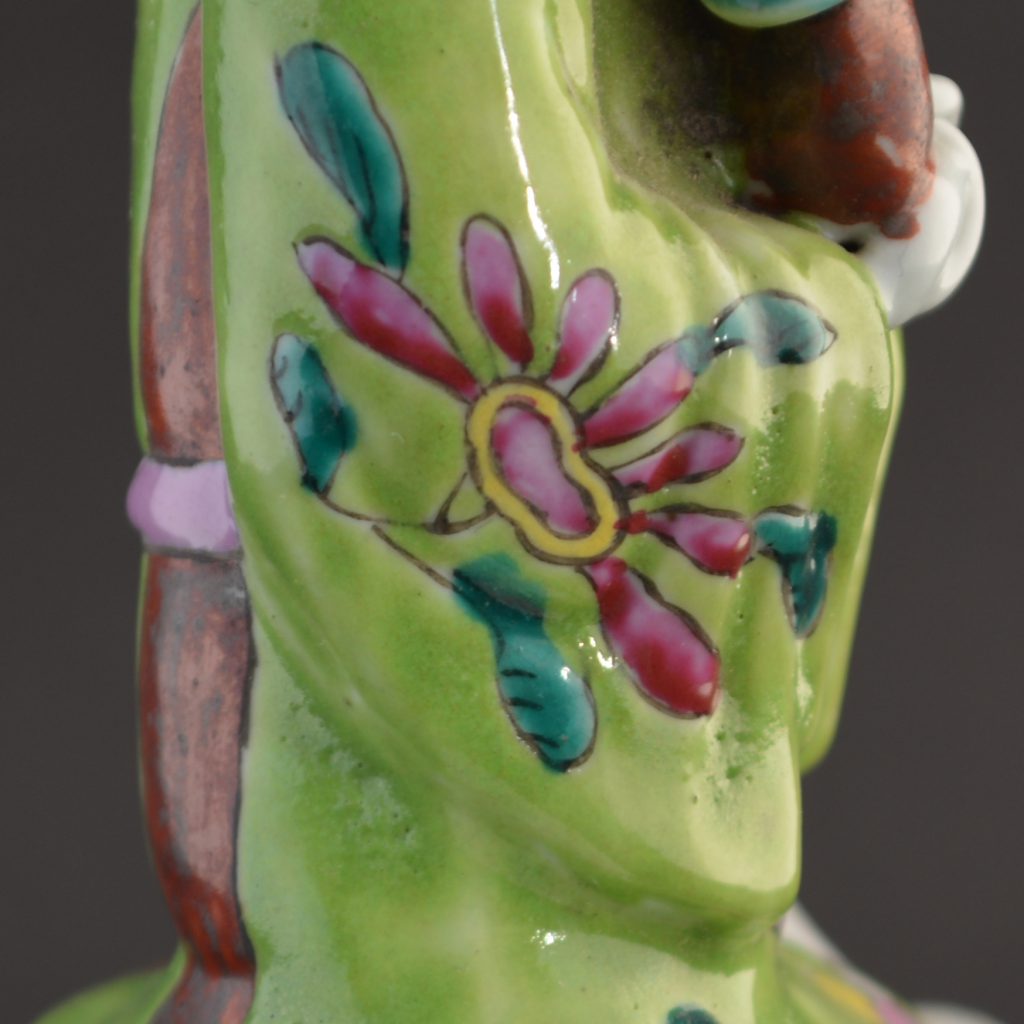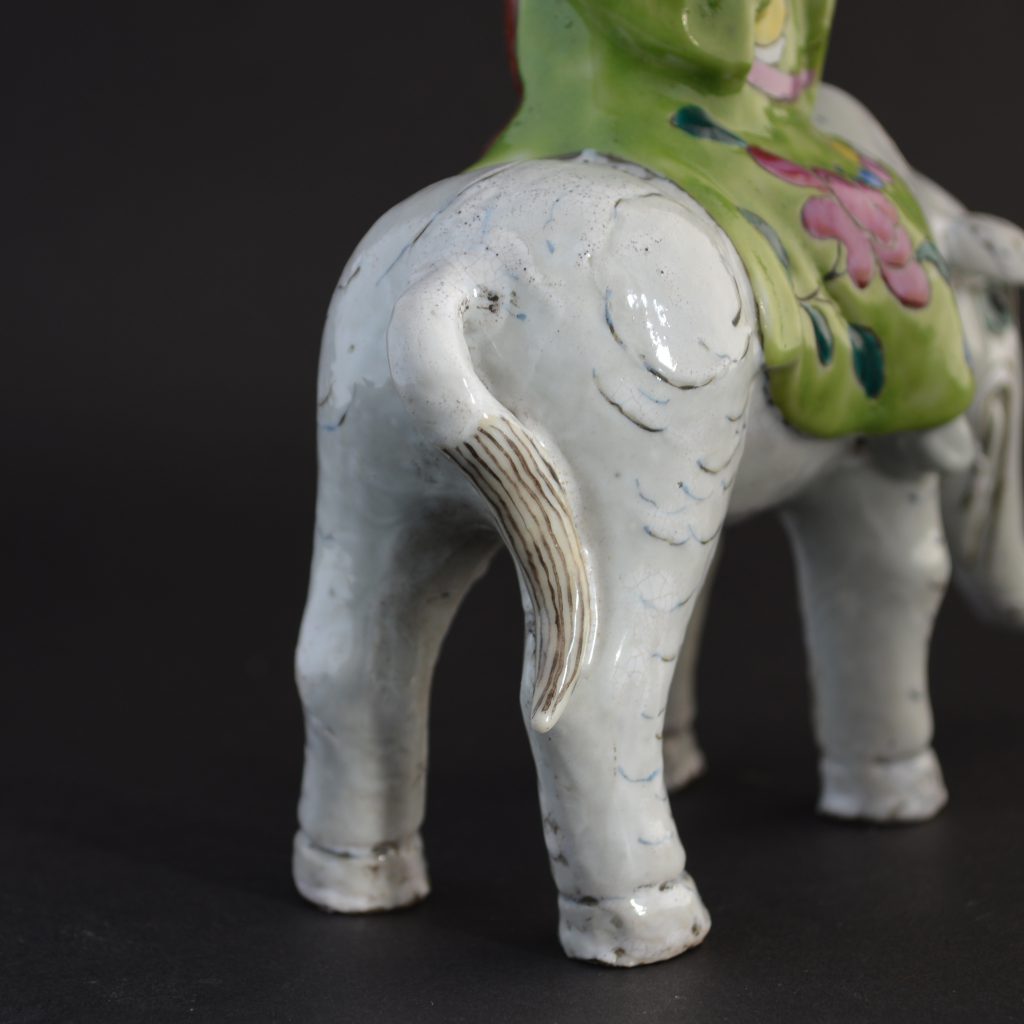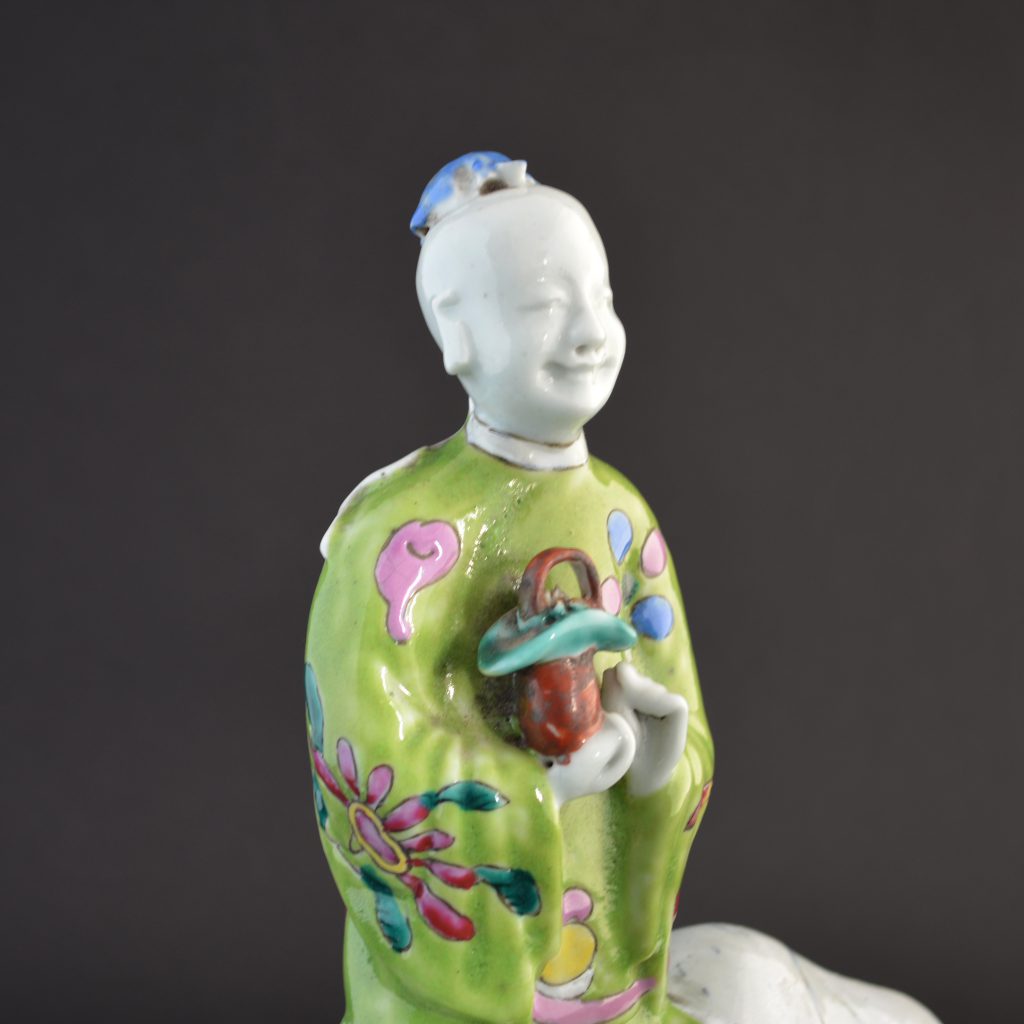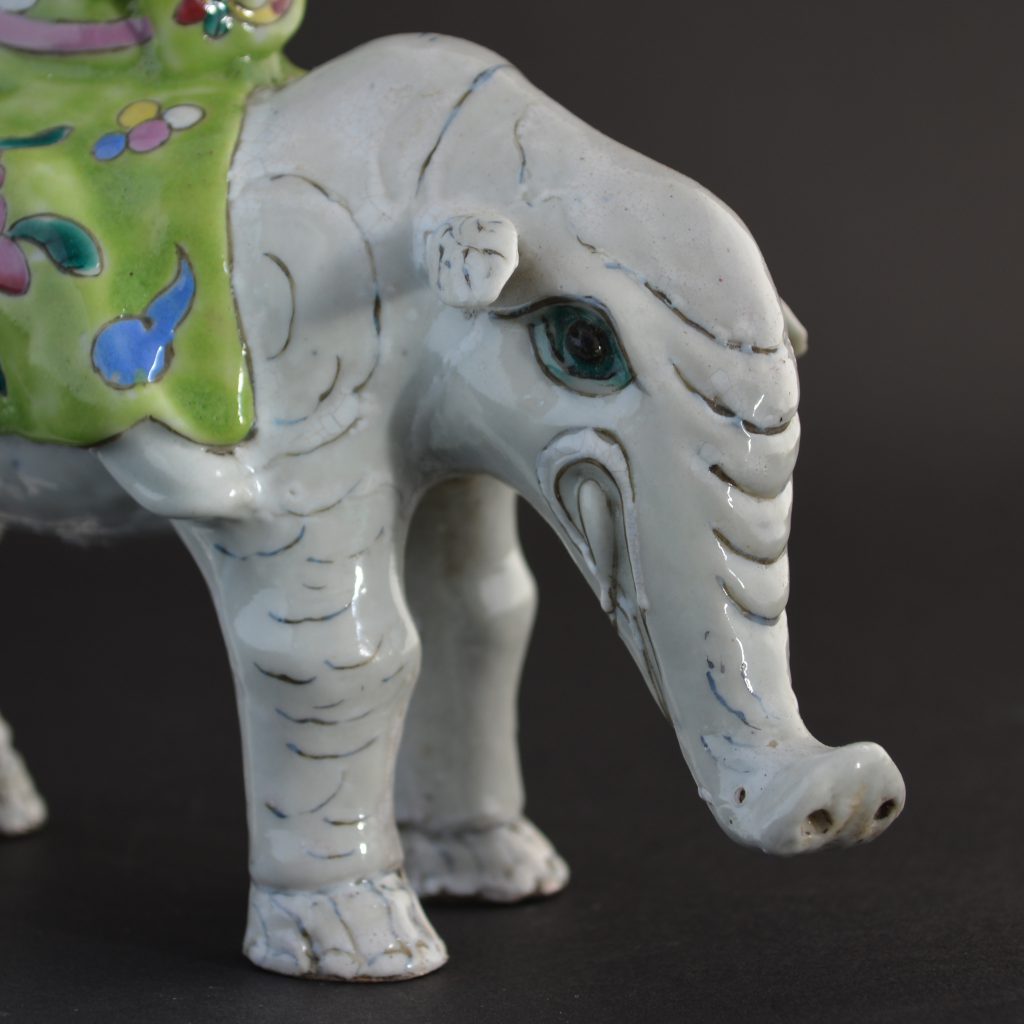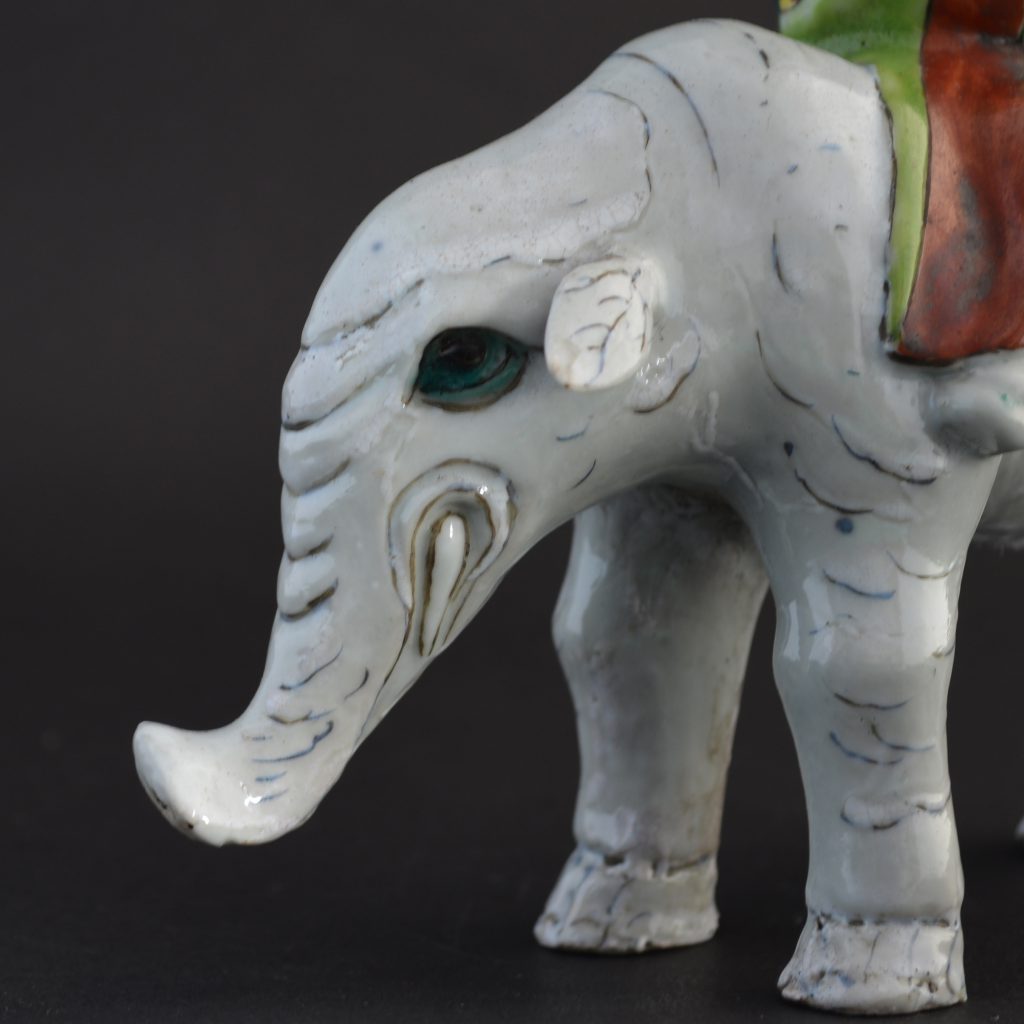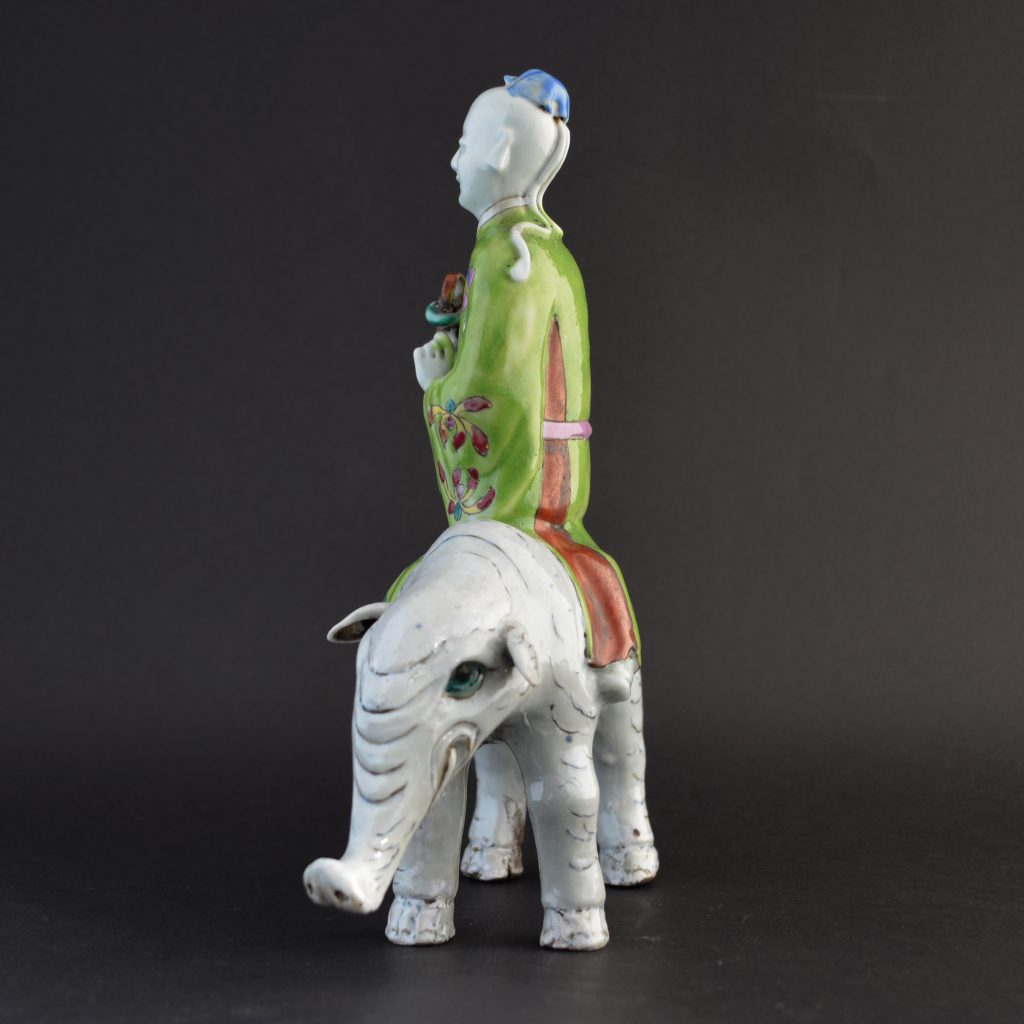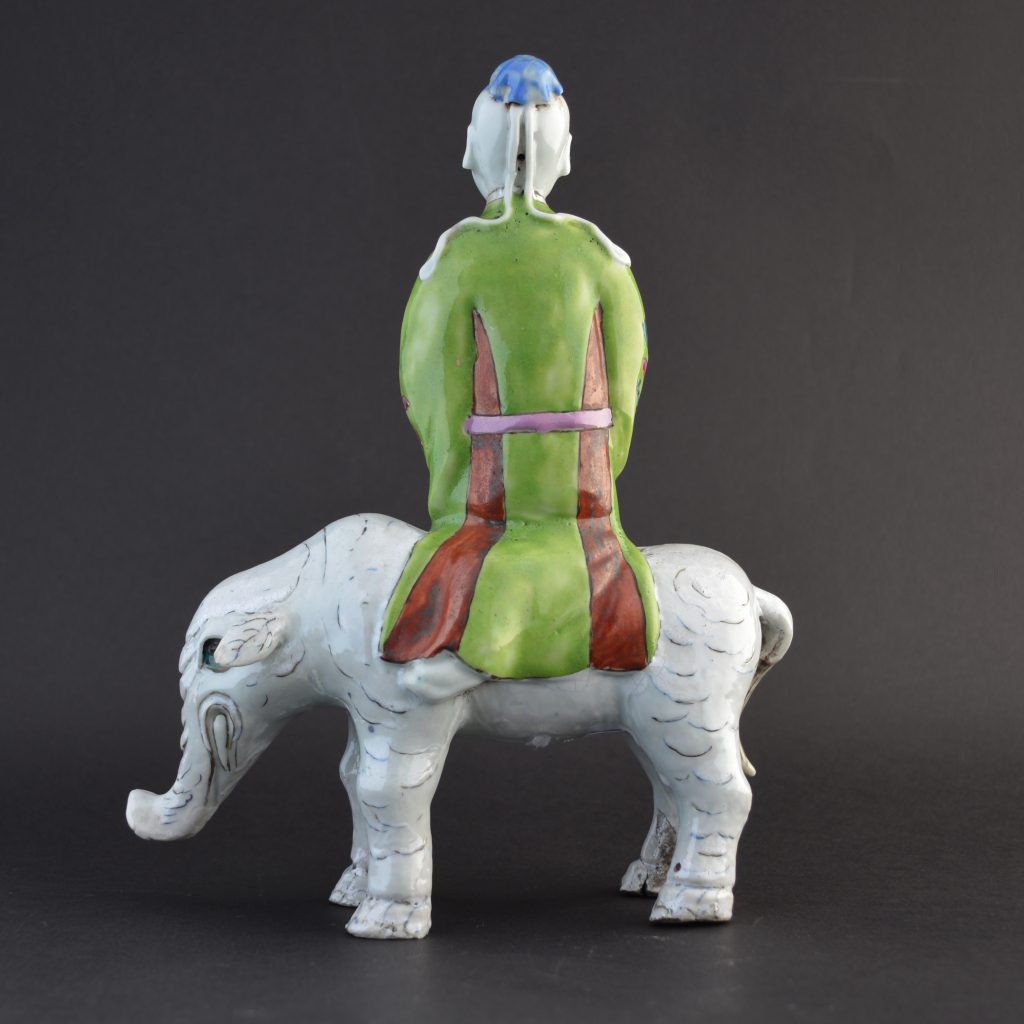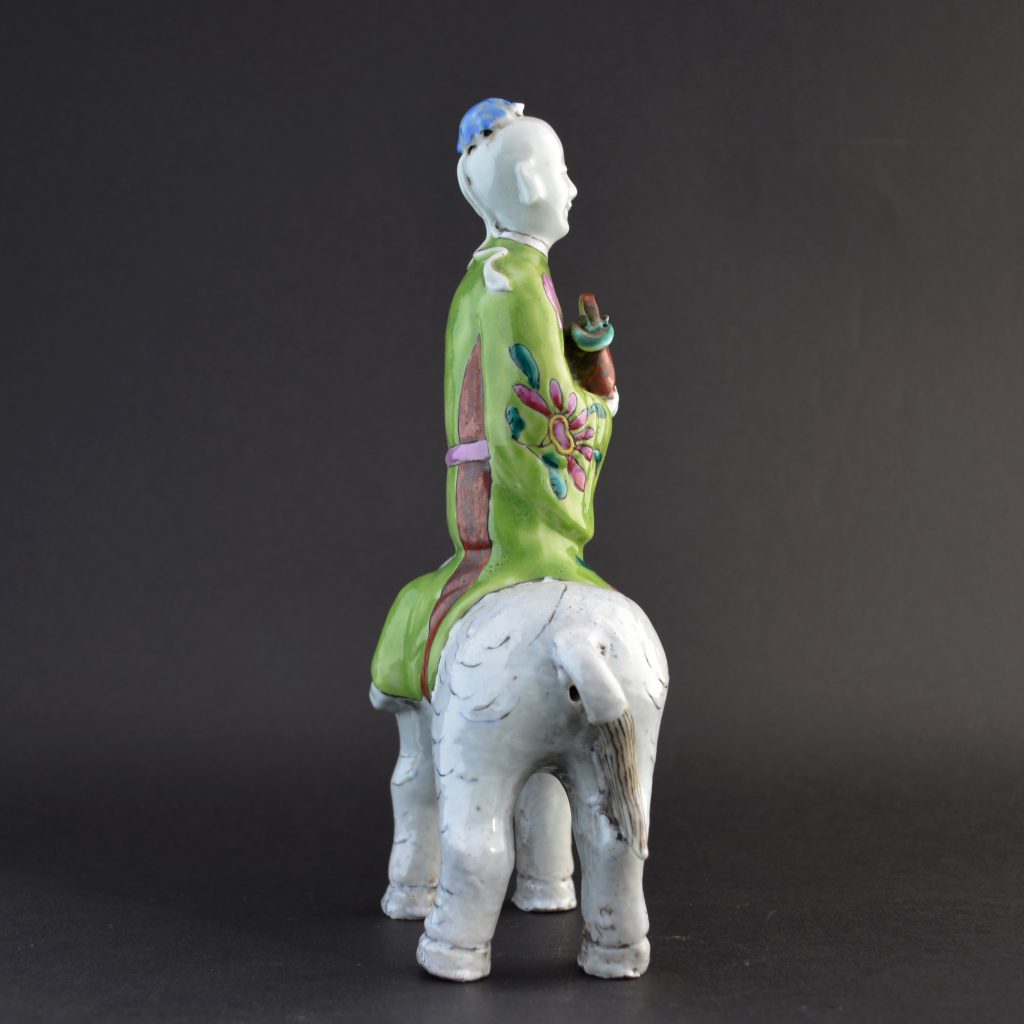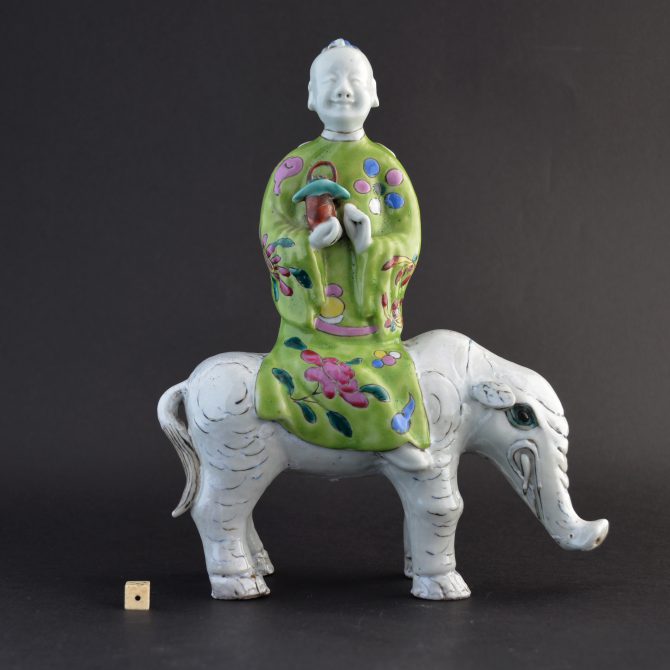
QIANLONG PORCELAIN MODEL OF AN IMMORTAL ON AN ELEPHANT
An unusual Chinese export porcelain Famille model of an Immortal riding a Elephant, Qianlong period c.1750-1770.
SOLD
- Condition
- N/A
- Size
- Height : 21.5 cm (8 1/2 inches)
- Provenance
- N/A
- Stock number
- 24594
Information
The Eight Immortals :
The Eight Immortals are a group of legendary Xian, immortals or transcendents in Chinese mythology. Each Immortals power can be transferred to a power tool that can give life or destroy evil. Together, these eight tools are called `Covert Eight Immortals`. Most of them are said to have been born in the Tang Dynasty or Song Dynasty. They are revered by the Taoists, and are also a popular element in the secular Chinese culture. They are said to live on Penglai Mountain-Island. The Immortals are : Immortal Woman He (He Xiangu),Royal Uncle Cao (Cao Guojiu),Iron-Crutch Li (LiTieguai),Lan Caihe,Lü Dongbin,(leader)Philosopher Han Xiang (Han Xiang Zi),Elder Zhang Guo(Zhang Guo Lao),and Zhongli Quan.
Elephants / Xiang :
Although symbolically important the elephant is not commonly depicted on Chinese ceramics. When it is the depiction, unlike so many animals, it can look unreal and rather odd. Presumably this is because the ceramic artist would have been unfamiliar with an animal, their numbers became diminished and were limited to certain areas of the country. It is thought that China`s elephant population is only in the region of 300 today. The Asian Elephant (Elephas Maximus) is sometimes depicted on Chinese ceramics as an animal with a rounded back and with lose fitting skin, but it can be shown as a powerful animal decked in rich cloth and carrying a vase on it`s back. Like so many other Chinese symbols the meaning it conveys is connected with the pronunciation of the word. Xiang (elephant) is a homonym for the word happiness. A rebus is formed when an elephant is depicted with a rider, usually a child, this conveys a `wish for happiness`. An elephant with a vase forms a rebus meaning `perfect peace in the universe`, this is expanded if there is a saddle cloth to mean `perfect peace and harmony in the universe`. The elephant is also closely connected with the Buddhist religion. An uncommon but interesting image of an elephant can be found on a few pieces of blue and white porcelain from the Transitional period. These scenes depict the Buddhist ritual of washing an elephant. For a Transitional blue and white brushpot dating to c.1640 with a version of this scene see : Late Ming, Chinese Porcelain from the Butler Family Collections (Exhibition catalogue, Sir Michael Butler, Musee National d`Histoire et d`Art Luxembourg 2008. ISBN 978-2-87985-029-0) page 125, plate 86. Another blue and white porcelain Transitional brushpot shows a boy with a brush cleaning the elephants back, see : Seventeenth-Century Blue and White Porcelain and Copper-Red and Their Predecessors (Exhibition Catalogue, S Marchant & Son, London, June 1997) page 53, plate 30.
